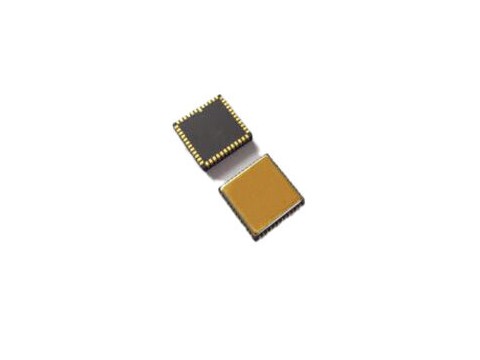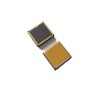MEMS definition
MEMS is the abbreviation of English Micro Electro Mechanical systems, that is, microelectromechanical systems. Microelectromechanical systems (MEMS) technology is a 21st century cutting-edge technology based on micro/nanotechnology, which refers to the design, processing, manufacturing, measurement and control of micron/nanomaterials. It can integrate mechanical components, optical systems, drive components and electronic control systems into a micro-system. This kind of microelectromechanical system can not only collect, process and send information or instructions, but also act on the acquired information autonomously or according to external instructions. It uses a combination of microelectronics technology and micro-machining technology (including silicon body micro-machining, silicon surface micro-machining, LIGA and wafer bonding technology) to produce a variety of excellent performance, low-cost, miniaturized sensors, actuators, drivers and Microsystems. Microelectromechanical system (MEMS) is a new multi-disciplinary technology developed in recent years, which will have a revolutionary impact on human life in the future. It involves many disciplines such as machinery, electronics, chemistry, physics, optics, biology and materials.
Definition of gyroscope
The gyroscope is an angular motion detection device using the moment-sensitive shell of a high-speed rotating body relative inertia space around one or two axes orthogonal to the rotating axis. The angular motion detection device made of other principles is also called a gyroscope with the same function.
The gyroscope can sense the rotation angular speed of one or more axes, and can accurately sense the complex movement in free space, so the gyroscope has become a necessary motion sensor to track the movement orientation and rotation of the object. Unlike accelerometers and electronic compasses, gyroscopes do not require any external force, such as gravity or magnetic fields, to perform their functions autonomously. Therefore, in theory, only gyroscope can complete the task of attitude navigation.
The characteristic of the gyroscope is that the high frequency characteristic is good, and the high-speed rotating motion can be measured. The disadvantage is that there is zero drift and it is easy to be affected by temperature/acceleration.
MEMS gyroscope definition
MEMS gyroscope is a micro mechanical angular velocity sensor realized by micro-electro-mechanical system (MEMS) technology. It is a fast, accurate and compact sensor that can be used to measure and sense changes in angular acceleration and angular velocity.
Ericco’s MEMS gyroscopes are divided into single axis, double axis, and triple axis according to the number of axes. It is divided into industrial class, tactical class (ER-MG-056, ER-MG-067) and navigation class (ER-MG2-50/100, ER-MG2-300/400). The tactical ER-MG-056 Economical MEMS Gyroscope, ER-MG-067 High Performance MEMS Gyroscope, navigation grade ER-MG2-50/100 High Performance North Seeking MEMS Gyroscope and ER-MG2-300/400 High Precision Navigation MEMS Gyroscope is our best-selling products.
Working principle of micromechanical gyroscope
The basic principle of MEMS gyroscope is to use Nanco crystal gyro (MEMS chip) in MEMS system to detect, measure and interpret changes in angular acceleration and angular velocity. The characteristics of the MEMS crystal gyro used will be oscillated by changes in external angular velocity. The rotor of nanocrystal gyro involved in MEMS gyro will mechanically vibrate according to the external angular acceleration and angular velocity changes.
important parameters of micromachined gyroscope
The important parameters of MEMS gyroscope include: Resolution, zero angular velocity output (zero output), Sensitivity and measurement range. The ER-MG2-300/400 is a navigation-grade MEMS gyroscope sensor with a measurement range of 400 °/s and deviation instability of 0.01°/ hour, designed for high performance IMU /AHRS/ GNSS auxiliary INS. Designed for accurate attitude and bearing measurement, positioning, navigation and guidance in aerial/Marine/land mapping/surveying systems/UAVS/AUVs and navigation-grade MEMS weapon systems.
ER-MG2-50/100 is a high performance MEMS gyro sensor with 0.01-0.02°/hr bias instability and 0.0025-0.005°/√hr Angle random walk, designed for logging tools/gyro tools, mining/drilling equipment, weapons/UAV launch systems, satellite antennas, etc. The target tracking system is designed for north finding, pointing, and initial alignment.
The resolution is the minimum angular velocity that the gyroscope can detect, and this parameter and the zero angular velocity output are actually determined by the gyroscope’s white noise. These three parameters mainly explain the internal performance and anti-interference ability of the gyroscope. For the user, the sensitivity has more practical selection significance. The measuring range refers to the maximum angular velocity that the gyroscope can measure. Different applications have different requirements for various performance indicators of gyroscopes.
The ER-MG-056 is a low-cost tactical MEMS gyroscope with an instability deviation of 1 °/hr and an angular random walk of 0.25°/√h. It is a single-axis MEMS angular rate sensor (gyroscope) capable of measuring angular velocity up to ±400°/s with a digital output compliant with the SPI slave Mode 3 protocol. Angular rate data is expressed as 24-bit words.
The ER-MG-067 is a high-precision tactical grade MEMS gyroscope with an instability deviation of 0.3 °/hr and an angular random walk of 0.125°/√h. It is a single-axis MEMS angular rate sensor (gyroscope) capable of measuring angular velocity up to ±400°/s with a digital output compliant with the SPI slave Mode 3 protocol. Angular rate data is expressed as 24-bit words.
These parameters are important indicators to judge the performance of MEMS gyroscopes, and also determine the application environment of gyroscopes.
https://www.ericcointernational.com/












